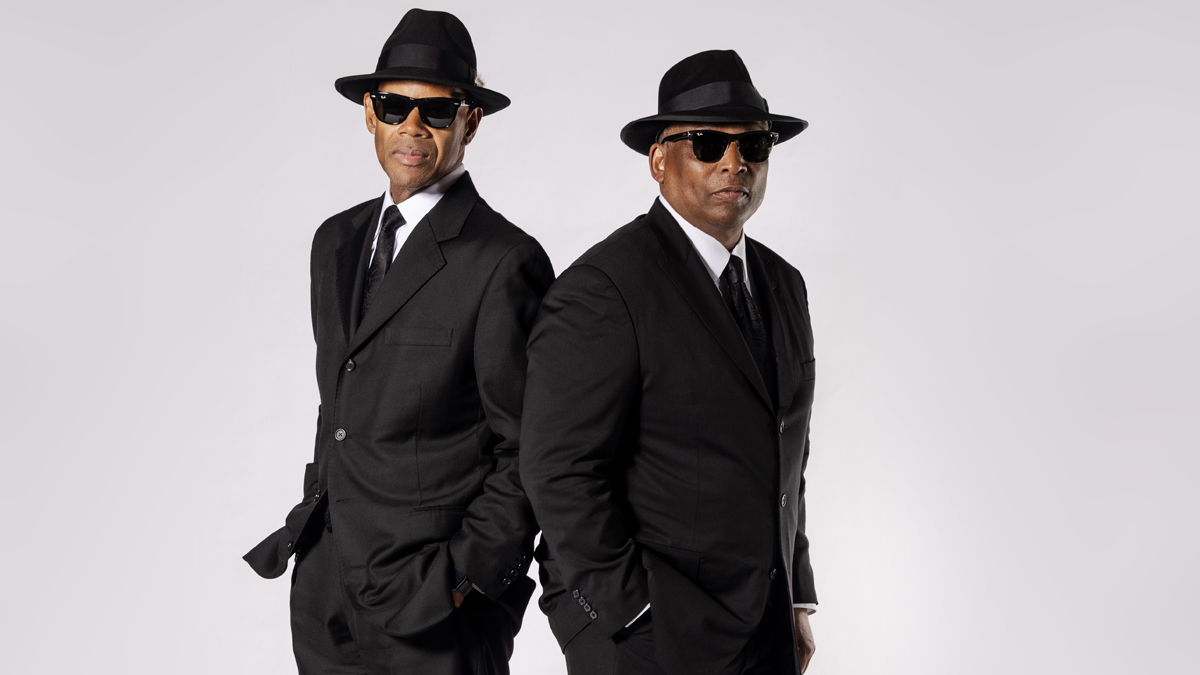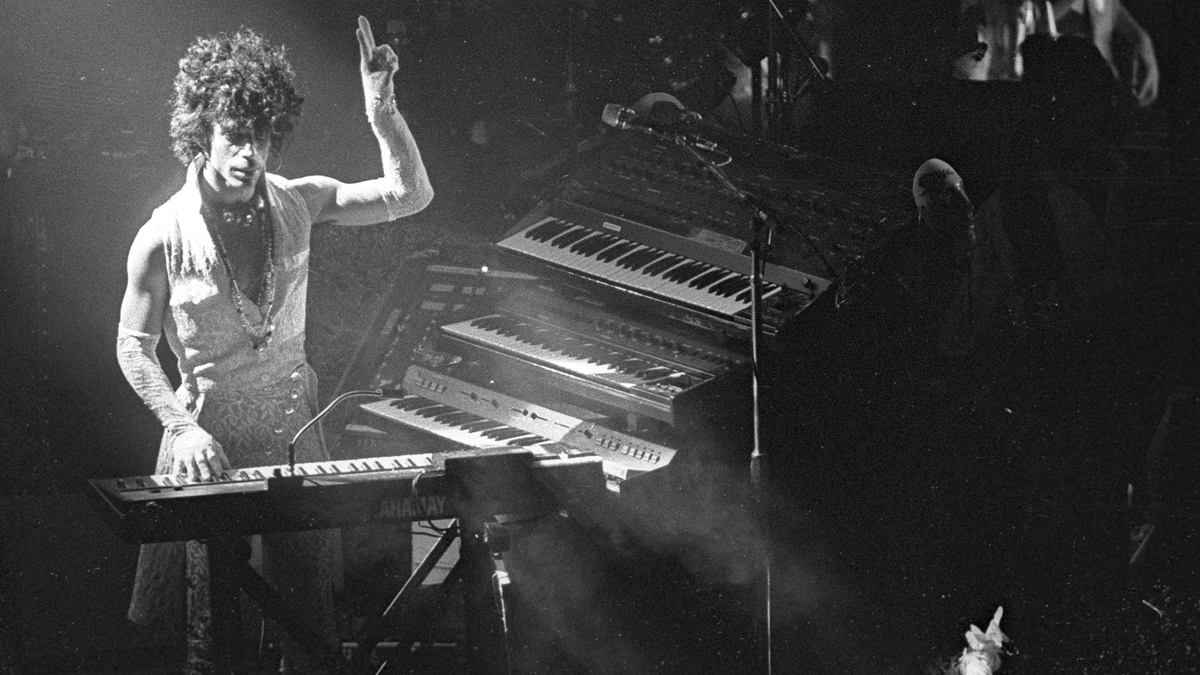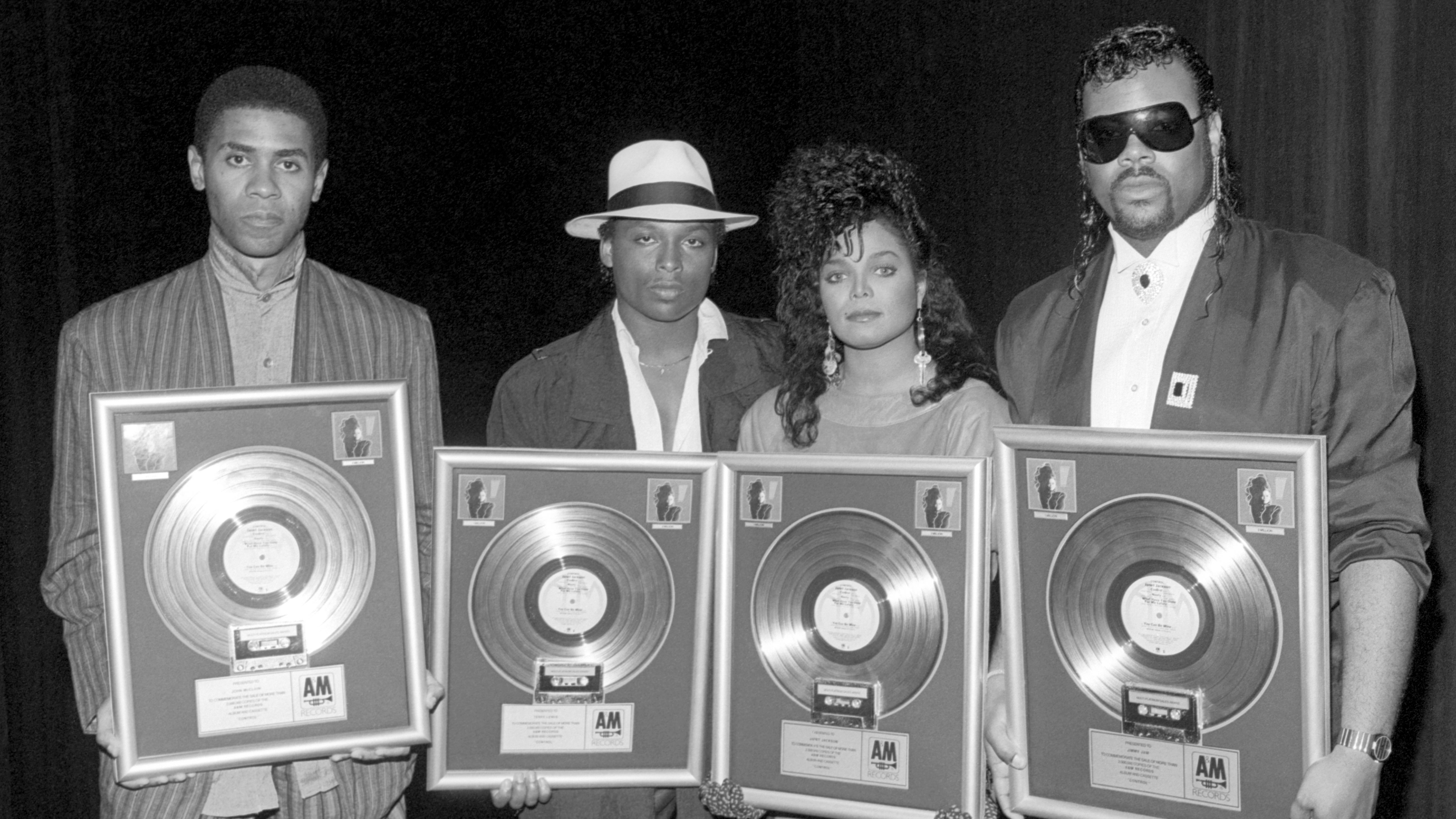Everybody’s gotta learn sometime and that includes '80s/'90s superproducers. And if you’re going to learn the art of recording why not learn from the best? What could possibly go wrong?
Some of those things were economically driven, ‘cos some of those things were less expensive, but a lot of it was ignorance ‘cos we didn’t know any better
Jimmy Jam
And so begins the story of how Prince taught Jam and Lewis how to record and how a narrowly averted disaster set the tone for the future of R’n’B.
Cast the Time dial back to 1981 and Jam and Lewis were keyboards and bass respectively - guns for hire on the Minneapolis music scene - forming the band Flyte Tyme, who became The Time when they were joined by frontman Morris Day.
Similarly striking out on the Minneapolis music scene was one Prince Rogers Nelson, whose Dirty Mind in 1980 and Controversy in 1981 had put him over the top. Naturally eager to recruit only the very best for his team he soon came gunning for Jam and Lewis, making The Time his default partners in crime.
Inevitably, during downTime, and after watching the great man at work, J&L began to ponder the world of production beyond the realm of Prince’s lace-gloved grip…
Soon the duo were working hard in LA by day with The SOS Band - crafting the album On The Rise and R’n’B uber-legend Just Be Good To Me - and gigging with Prince at night on his relentless six-month, 87-date '82-into-'83 tour to promote 1999.
Call it crazy ambition, call it pure bad luck but something had to give and the inevitable happened. Caught in their double-life as Prince’s willing disciples and breakout producers in their own right, the duo found themselves trapped at LAX airport in bad weather post SOS band session, unable to make the plane back for a Prince gig in Atlanta.
Needless to say, the hardest-working man in soul/pop/rock was not best pleased at this perceived betrayal and the pair were sacked on the spot. “We were ‘freed from’ The Time” corrects Jam when the duo spoke to MusicRadar in 2021.

Jam & Lewis: “With Prince, we learned to use synthesizers in a very musical way”
With time (but not The Time) on their hands the duo realised that jetting between LA and Minneapolis was a grind they could do without and rather than watch the clock and pay through the nose, they should set up their own studio closer to home.
Thus Flyte Tyme studio took shape but with the big time yet to find them its gear was more steeped in necessity and convenience than quality and luxury.
Rather than go for the studio standard Studer, the duo opted for a more affordable Otari 24-track. Needing to recoup their investment by recording 24/7 and with tape prices prohibitively expensive, the pair religiously ran their deck at 15 IPS [inches per second] rather than the 30 IPS it was capable of.
Some of those things were economically driven, but a lot of it was ignorance
Jimmy Jam
It was a move spurred by pure economy and doubled up how much they could fit on a tape. Of course, slower speeds impact quality (part of the reason why 45rpm 12-inch singles sound so much better than 33rpm album tracks) so the duo also leant on the new Dolby SR noise reduction rack to make up for any shortfall. Win win.
Likewise, while larger studios were thrilling to the delights of the SSL desks of the time (with full automation just around the corner) Jam and Lewis used an American-made Harrison board – subsequently famous for its sweet EQ – but at the time very much a homegrown, more realistically affordable alternative.
While big name, synth rock contemporaries surrounded themselves with Moogs and ARPs, Jimmy Jam cut his teeth on more affordable sound-alike fare from Roland. Of course Roland’s synths – most specifically the Jupiter 8 and spin-off ‘sister’ Juno keyboards would go on to be highly coveted legends in themselves – but at the time playing a Japanese synth in the States was akin to driving a Honda rather than a Cadillac.
And with sampling making its first stumbling steps into music production, the $28,000-plus Fairlight was of course beyond their reach. Instead, they went for the $1,695 Ensoniq Mirage, a French-made corner-cutting sampler that, thanks to the cheap 8-bit chips on board, had a crunchy sound all of its own.
“Some of those things were economically driven, ‘cos some of those things were less expensive, but a lot of it was ignorance ‘cos we didn’t know any better. But we knew what sounded good and felt good to us,” explains Jam.

Prince’s go-to synths and drum machine: a career in music tech gear
“You have to go back a little bit. When we started out synthesizers were fairly new. They made sound effects basically but we learned in a very musical way – growing up with, and around Prince – to utilise synthesizers for music. But also we never used what the norm was.”
“And ease of use was really important,” takes up Lewis. “Because when you have to sit and fiddle… When you have to read and learn… That just kills the vibe.”
And soon it was time to give the studio its first workout. Step up Cherelle, a backing singer for Luther Vandross whose demo tape had got her signed to the nascent Tabu but was in search of songs and a producer. Hot from Just Be Good To Me, the newly minted Jam and Lewis partnership had I Didn’t Mean To Turn You On ready to go with Cherelle the perfect fit.
However, Flyte Tyme’s maiden voyage did not go well. During the sessions a disagreement with their engineer left the duo flying solo in their own studio as Cherelle looked on.
“We had this whole studio that we’d just built and no clue how to work anything,” explains Jam. But, ever the resourceful, seat-of-the-pants performers, Jam & Lewis were determined to ensure that the sessions still went with a swing.
“We decided that we’d never be dependent on somebody again and so we decided to learn. Cherelle was in the studio so she became the guinea pig so to speak. We’d be blowing speakers up and blowing headphones up around her and she’d be like ‘That’s OK, baby…’ But we learned to work the studio with Cherelle.”
Flyte Tyme was officially in business and before long a dialogue began with John McClain of A&M Records (not to be confused with the Nakatomi Plaza-destroying rogue cop of 1988’s Die Hard) who forged a deal for the duo to produce an unnamed artist’s new album.
However, with the day-to-day vagaries of ‘who’s hot’ and the duo’s as yet un-minted reputation as production superstars, McClain was unable to seal the deal as – simply – said artist didn’t want to work with the ‘who hell he?’ production newbies. By way of apology (and knowing talent when he heard it) McClain offered to hook the duo up with their choice of anyone on the A&M roster and duly a pre-internet paper ring binder of A&M’s greatest and good was dispatched by courier.
The pair dragged their fingers down the pages of the list, but of all the big names (and with McClain on the hook to deliver) there was only one that jumped out. They both stopped scrolling when their fingertips hit Janet Jackson…
Jackson was, at the time, very much parked on an A&M siding. While clearly talented and bearing a family name that could open more than a few doors, her first album, 1982’s self-titled Janet Jackson, had only reached number 63 and its follow-up two years later, Dream Street, had ‘hit’ 147. Two long years after that Jackson was going precisely nowhere.
Instead, she remained on A&M’s books, partly as a trophy of the ‘big names’ they held captive and partly so that no other label could get lucky with a breakout hit from Michael’s little sister.
They were still very much winging it in their own studio. And it was all Prince’s fault.
But Jam and Lewis saw things differently. Janet was an opportunity to flex their musical muscle, make the album they wanted to make and craft their own superstar in a new R’n’B landscape where bigger names, with hard-fought reputations to lose, had already feared to tread. But most of all, “We just knew what we wanted Janet to sound like,” explains Jam.
Thus the trio hit Flyte Time and took Control…
Control was an album specifically crafted around a new persona for Jackson. It was no-nonsense. It was tough. It knew what it wanted and knew how to get it. And even if Jackson herself was actually none of those things, given the freedom and ‘control’ to do what she wanted for the first time, she effortlessly slipped into her part and made it, and the album, all her own.
There was only one problem.
Flyte Time was still very much an amalgam in the making and while highly skilled musicians and upstart producers, Jam and Lewis were still very much winging it in their own studio. And it was all Prince’s fault.
Inspired by the soul and funk legends that fused to form the Prince amalgam, the man himself always recorded ‘hot’. That is to say loud in every sense. Be it the volume coming out of his guitar amp, the gain on his mic or the levels hitting the tape. With Prince, everything was always in the red. And Jam and Lewis looked on and learned. And with Flyte Tyme’s first album under their belt, it was time to take it to the next level. Literally.
Jimmy Jam takes up the story: “When we were recording with Prince he would always record everything into the red on the VU meter. And so we were like ‘Well, we’re going to record like the way Prince records’ so that’s what we did. We recorded everything in the red. So when we got Steve Hodge to come up to mix the album he puts the tape on and he goes ‘Who engineered this?’
"And we were like ‘We did!’ We were so proud of ourselves! And he said ‘Everything is recorded way too loud!’ and we said ‘We meant to do that – that’s the way Prince records’. And he said ‘But what kind of machine does Prince use’ and we said ‘I don’t know, an Ampex or whatever’. And he explained.
“On Prince’s machine when it says ‘zero’ on the VU meter, zero is zero. Your machines are set to ‘plus 6’ so when it says zero you’re already 6dB above. And you’re pinning the needles on this? You’re saturating! You’re way over! And we were like ‘Oh, man… Can it be saved?’ And this is the whole album. And he’s just like ‘Yeah, yeah, but I’m going to have to come over and teach you guys how to record…”
Thus Control’s ‘hot’ recording – by necessity of it being too late to fix – became its defining sound. Steve Hodge saved the day and the hot takes by Janet and J&L made the cut rather than winding up on the cutting room floor.
“It was a sound that you’d heard before… but you just hadn’t heard it recorded like that. The sum total being that it comes off sounding totally different,” explains Jam.
Hodge took the album's crunchy, edgy sound and pushed the accidental soundscape further. Using the audio on the tape to trigger an AMS delay unit he created unique composite sounds of pure noise that would become the album’s signature. Take the ‘trash can’ snare sound of 7” mix of When I Think Of You (below) for example.
While at its heart it's a simple LinnDrum pattern and snare, Hodge took the already too-hot sound to the next level, layering and retriggering multiple AMS samples from that single hit. Thus he created gated-reverb monster snares of a kind never heard before but were soon repeated all across the electro-R’n’B and New Jack Swing genres that sprang up to define the era.
“The way that Control sounds is an accident because we didn’t know what we were doing. And Steve basically saved us and made it sound great. It made the record sound ‘frantic’. And that’s the thing that Prince always said.
"He always liked the idea that when your ear hears distortion it basically thinks something is loud. And his thing was that he always wanted his records to sound loud and frantic on the radio. So that’s what Control had.
"When it came on the radio it was so different. But, like I say, It was a happy accident,” says Jam.
Today Control remains an inspiration. Packed with jump-out mix tricks, and misused samples (check out the bass sound on Nasty) it set the pace and put Janet and the J&L partnership over the top.
The rest is history.








